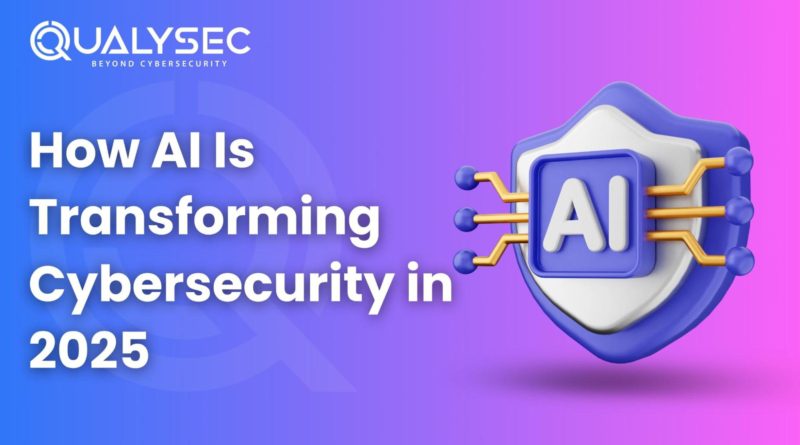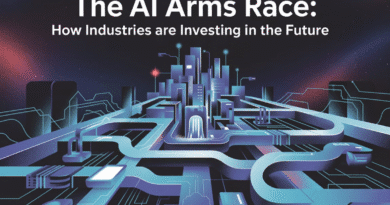How AI Is Transforming Cybersecurity in 2025
According to the World Economic Forum, most organizations believe AI in cybersecurity will have the biggest impact this year. However, only a small number have guidelines for assessing their AI tools before deployment. Since 47% of organizations say actively threatening technologies using generative AI is their biggest worry, and another 42% have successfully faced social engineering using AI, it’s obvious that both sides in cybersecurity are using AI a lot. Because cybercrime is increasingly clever and can reach more people, AI is now at the heart of a fast-shifting digital security battle that is influencing how threats are uncovered, blocked, and dealt with.
Table of Contents
What Powers AI in Cybersecurity
- Instant Threat Detection and Action – Using big data, AI can quickly observe and report on suspicious and unusual occurrences across networks, users, and system logs, faster than any rule-based tool or human analyst can do. Because cyberattacks can occur in just seconds, businesses must be able to solve the problem quickly to avoid harm to their data or business functions.
- Machine Learning and Behavioral Analytics – Today’s cybersecurity platforms apply machine learning to previous data, which allows them to recognize what usual behavior looks like for all users, devices, and applications. Anytime unusual login times, strange locations, or strange data movements are detected, AI will instantly flag these, possibly signaling insider threats.
- Automatic Generation of Incident Response – AI simply reports threats and takes action against them. If malicious activity is uncovered, AI-powered systems make it easy to isolate the threat’s devices, block the IPs behind attacks, and launch instant cleanup, helping businesses recover much faster. It becomes valuable because organizations usually do not have enough skilled cybersecurity personnel.
- Predictive Analytics and Always Being Ahead – Using information from past attacks and new threats, AI can point out likely attack paths a threat might take before that threat can use them. With this feature, organizations can prevent problems by spotting them early and making improvements ahead of any issues.
Why AI Is Better Than Traditional Cybersecurity
Current cyberattacks happen so fast that old tools that depend on set rules and people checking for problems are no longer up to the challenge. These systems have multiple distinct advantages –
- Process and analysis of petabytes of data is possible for AI, but not for human teams.
- As new data is given to them, machine learning models improve and can detect fresh ways for hackers to attack.
- AI keeps working all the time without getting tired, helping to avoid mistakes by humans and keeping up a constant watch.
- Responding to threats automatically allows for a rapid fix that once took much longer.
How AI Helps with Defending Systems in the Real World
- AI Firewalls and Intrusion Detection Systems – Today’s security systems that use AI can watch for suspicious activities on networks, block them immediately, and respond to any newly developed forms of attacks.
- Behavioral Biometrics – AI solutions monitor the way users interact with a system, for example, typing speed, where the cursor moves, and types of devices used, to recognize that an account could have been taken over or that credentials were stolen even when the attacker is logged in.
- Phishing Detection – NLP makes it possible to inspect emails and their patterns to notice when someone may be trying to trick you with phishing or spear-phishing. Using these tools, security staff can stage fake phishing attacks to help employees improve the organization’s ability to recover.
- Stop Financial Fraud – A bank or payment processor uses AI to spot real-time changes in transactions or locations that might be a sign of fraud.
AI in the Hands of Attackers
- AI is greatly changing the nature of defense, but it is also being used by attackers online.
- Vulnerabilities can be repeatedly detected by AI, which can complete network and system scans much faster.
- Those who send phishing emails now rely on generative AI to make their attempts more convincing, so it takes stronger tools to identify them.
- Malicious AI can switch its approach in real time, so it is hard for security systems to tell what it is doing.
- Because of the arms race, those who defend networks must regularly upgrade their artificial intelligence to face new risks.
How to Use AI in Cybersecurity
- Access Control – Restrict everyone’s access to AI systems and the data they can touch to only what they absolutely should have. Frequently check and control the use of APIs to prevent someone from fraudulently accessing them.
- Reviewing Data – Protect the information of your data and secure it so it is not jeopardized during training or operating machine learning models. Rigorous review of data, encryption, and performance audits should be used in design, development, deployment, and while the system is in operation.
- Cautious Testing – Introduce AI first on systems that matter less, check for risks frequently, and increase its use when your security infrastructure is stronger. Place governance of AI security, ethics, and compliance in a single location.
- Incident Response – Thanks to AI, companies can observe all data and see any threats at the earliest possible time. Let AI take care of incident response by automatically handling threats like isolating infected computers or stopping bad activity, which means quicker and less damaging responses.
- Data Operations – Defend models from attempts to poison, alter, or attack them by checking input data accuracy and watching for different outcomes from their operations. Isolate sensitive information from training data, unless you have to use it, and secure both prompts and outputs from being leaked to outsiders.
- Security Updates – Develop a separate plan for AI security incidents – don’t ignore attacks, use prepared strategies, and often conduct simulation exercises to manage them efficiently if they do happen. Regularly update your AI systems by supplying new data and routinely check for new vulnerabilities during security checks.
Top Recommendations for Organizations in 2025
To properly benefit from AI by also reducing the risks involved, organizations need to take some measures. A few of them are –
- Take advantage of both old defenses, modern technology, knowledgeable people, and the right policies.
- Help staff become aware of fictional information and fake login requests, both main ways AI is used to attack businesses.
- AI systems should focus on privacy and follow all data protection rules by using an anonymizer and restricting access.
- Do not hesitate to refresh your AI data and use it to test its models.
- Exchange valuable knowledge and techniques among your peers, groups in your industry, and government officials to keep yourself informed about new security threats.
Conclusion
In the coming year, AI will serve as the main premise for building effective digital defense measures. AI helps companies respond immediately to security threats, predict hazards, and defend key assets as cybercrime continues to grow.
Yet, because attackers use AI to expand the disruption they cause, cybersecurity will develop into an ever more demanding challenge. Personal data reunited hacking can be overcome by those who include sharp AI tools, powerful processes, and a lasting drive to improve and protect. While AI continues to evolve in cybersecurity, it’s obvious that algorithms and automation will affect digital security just as much as the people using them. Use the help of professionals like Qualysec Technologies, who will always help you to be cyber secure!




